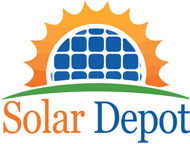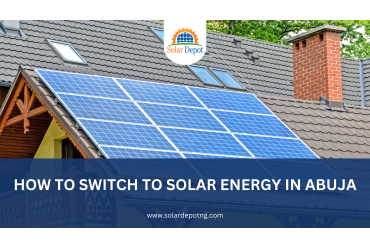Half-Cut vs Plain-Cell Solar Panels: Which is Better for Nigeria?
Half-Cut vs. Plain-Cell Solar Panels: Which is Better for Nigeria?
Making the Right Solar Choice in Nigeria
With the ongoing energy crisis, unpredictable grid power, and soaring generator fuel costs, more Nigerians are making the switch to solar. But choosing the right solar technology isn’t always straightforward. One of the biggest decisions involves choosing between half-cut and plain-cell (full-cell) solar panels.
In this guide, we’ll break down what these technologies are, their benefits, their differences, and—most importantly—which is better suited for Nigeria’s energy landscape.
What Are Plain-Cell (Full-Cell) Solar Panels?
Plain-cell panels, also called full-cell or standard solar panels, are made up of 60 or 72 full-sized photovoltaic (PV) cells. This traditional panel design has been used for decades and is still widely adopted due to its affordability and proven track record.

Advantages of Full-Cell Panels
- Lower upfront cost
- Easier availability in most markets across Nigeria
- Proven technology with long operational history
Disadvantages
- Lower efficiency compared to newer technologies
- Higher energy losses in high-temperature environments
- More vulnerable to power drop under partial shading
What Are Half-Cut Solar Panels?
Half-cut solar panels use laser-cut PV cells, each split into two equal halves. This reduces the current in each cell and leads to less resistance and lower energy loss, making them more efficient and durable.
They also usually consist of 120 or 144 half-cut cells, arranged in a format that improves performance even under shade or high heat—perfect for tropical climates like Nigeria’s.
Advantages of Half-Cut Panels
- Up to 20% higher efficiency than standard panels
- Better performance in hot conditions and partial shading
- Increased durability and resistance to micro-cracks
- More power output per square meter
Disadvantages
- Slightly more expensive upfront
- May require professional installers familiar with newer tech
Why Efficiency Matters in Nigeria
Nigeria’s climate—especially in cities like Abuja, Lagos, Port Harcourt, and Kano—includes intense heat, dust, and varying cloud cover. These conditions impact how much solar energy your panels can generate.
Half-Cut panels are thermally stable and maintain better efficiency even in temperatures above 35°C, which is common in Nigeria.
For Nigerian homes that experience intermittent shading (from trees, water tanks, poles, or nearby structures), Half-Cut panels offer a clear advantage. Traditional full-cell panels lose significant power under partial shade, while Half-Cut panels maintain output.
Use-Case Scenarios for Nigerian Users
Scenario 1: Residential Home in Abuja
A 5-bedroom house runs ACs, lights, TV, freezer, and CCTV. The rooftop gets sunlight all day but has partial shading in the morning.
✅ Recommendation: Use Half-Cut panels for better shading tolerance and higher daily yield.
Scenario 2: Business Office in Lagos
A medium-sized office uses printers, servers, lights, AC, and operates 9–5. Needs reliable power without generator dependency.
✅ Recommendation: Install Half-Cut panels to handle peak hour demand and heat buildup during the day.
Scenario 3: Small Home in Rural Benue
Low power demand for lights, fan, and a small TV. Limited budget. Rooftop gets full sun.
✅ Recommendation: Plain-Cell panels are budget-friendly and sufficient for basic needs.
Cost Analysis: Is the Price Difference Worth It?
Half-cut panels typically cost 10–20% more than full-cell panels. However, they generate more power per square meter and last longer, meaning you get a better ROI over time.






